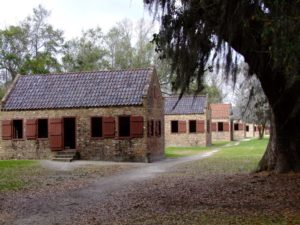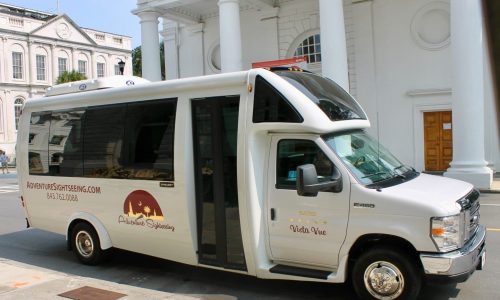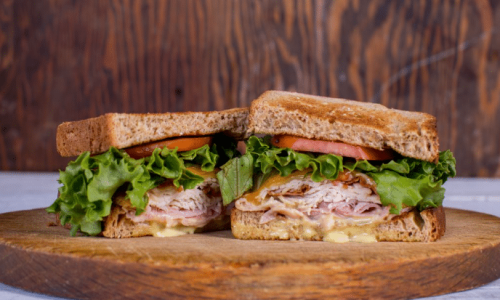Area plantations provide history on slave life in Charleston

Each year visitors come to Charleston to soak up the area’s rich history. They are eager to step back in time to the 18th and 19th centuries, gaining a deeper understanding of Charleston’s past. That history is deeply intertwined with that of the slaves who worked the rice and cotton plantations and cared for the stately mansions in downtown Charleston.
The recently opened McLeod Plantation Historic Site provides a detailed history of the slaves who worked its cotton fields and their struggle for freedom following the Civil War. The Charleston County Park and Recreation Commission operates the 37-acre site, which is opened to the public in April 2015 after four years of work to ready the site for tours.
The property was first occupied by Native Americans before English colonists arrived in 1670. It had a few different owners before William Wallace McLeod purchased the 1,700 acres in 1851 for $11,500.
The McLeods turned the land into a sea island cotton plantation, using as many as 100 slaves to work the land and tend to the farm animals and gardens. Sea island cotton – extinct in 1918 after a boll weevil outbreak – grew 8 to 12 feet tall. It was picked every 10 days from August to December, maybe even January if the weather was warm.
According to plantation records for 1859 to 1860, the McLeod plantation generated 64 400-pound bags of cotton. Considering the processing of the cotton to extract just the best pieces means the slaves picked 90 tons of cotton that year while also caring for 70 hogs, 24 sheep, 50 dairy cows and much more.
The McLeods grew cotton for a decade before the Civil War broke out. A secessionist, William Wallace McLeod left his plantation home to join the Charleston Light Dragoons. He died in 1865 while returning home from the war.
James Island was a strategic location for Charleston’s defense during the Civil War so McLeod Plantation became the headquarters for Confederate and Union troops.
Following the Civil War, the 55th Massachusetts Volunteer Infantry, a regiment made up of free African Americans, set up a field office at McLeod and the row of small houses – once occupied by the slaves – were now homes for the freedmen and their families.
Some of those houses on “transition row” as well as the Worship House remain on the site for visitors to get a glimpse at how the slaves and subsequent freedmen made their homes on the property.
Much of the site’s interpretive history and tours focus on the transition following the Civil War, highlighting the slaves who worked the plantation and their struggle for freedom.
Take advantage of the 45-minute guided tours to go deeper into the plantation’s history. There’s also a free app for Apple devices called “Transition to Freedom” that visitors can download to supplement their experience.
Plantation life in the Lowcountry
Charleston is home to several plantations, many of them offering special programs that detail the history of slaves who worked on the property. Touring these many historic homes and plantation grounds is an excellent way to gain a deeper and broader understanding of what life was like for slaves in Charleston as well as African-American history and culture.

Middleton Place
Middleton Place was settled in the late 17th century and acquired through marriage by Henry Middleton in 1741. For more than 125 years, four generations of Middletons lived and worked on the property with many playing integral roles in the country’s history. Henry Middleton was the second president of the First Continental Congress and his son, Arthur, was a signer of the Declaration of Independence. Arthur’s son, Henry, was governor of South Carolina and his son, Williams, signed the Ordinance of Secession.
Today, Middleton Place is known for having America’s oldest landscaped gardens and a house museum filled with extraordinary family furniture, silver, porcelain, rare books and portraits.
Visitors can tour various parts of the plantation, including taking the “Beyond the Fields” tour that offers an extensive history of the slaves who lived and worked on the plantation as well as the freedmen at Middleton Place and other plantations.
A key stop on the tour is Eliza’s House, once occupied by former Middleton slaves. The house has historical exhibits and a list of the 2,800 enslaved people who worked on the Middleton’s various plantations around the Lowcountry. The house is named for Eliza Leach, a South Carolina African American born in 1891 and the last person to live in the building. Along the “Beyond the Fields” tour, guides discuss domestic life at Eliza’s House, the labor at the rice mill and spring house as well as spirituality at the Plantation Chapel and slave cemetery.
Visitors can also stop off at the Plantation Stableyards to see the many jobs of the slaves who worked there.
Boone Hall Plantation

Another beautiful and historic plantation is found in Mount Pleasant. Englishman Maj. John Boone
established Boone Hall Plantation in 1681 when he started his plantation on the banks of Wampacheone Creek. Boone Hall – spanning 738 acres – provides a variety of tours and exhibits detailing plantation life, including black history and details on the slaves who lived at the plantation.
“Black History in America” is a self-guided tour told using eight of the original servant quarters located on Boone Hall Plantation that were built between 1790 and 1810. Each cabin highlights a different historic theme – including praise house, sweetgrass baskets, work and life, emancipation and freedom, civil rights – using life-size figures, photos, relics and pre-recorded narratives.
“Exploring The Gullah Culture” is a live presentation in The Gullah Theater, located at the end of Slave Street. The Slave Street and History Presentation begins at the top of Slave Street in front of the slave cabins. A guide provides a historical look at the living quarters, historic relics and lifestyle of the slaves that lived at Boone Hall. (Check schedule sheet at front gate for times.)
Magnolia Plantation
Founded in 1676 by the Drayton family, Magnolia Plantation is home to the oldest public gardens in America. It opened in 1870, welcoming visitors to its gardens filled with thousands of beautiful flowers and plants.
Magnolia Plantation brought the family great wealth as a rice plantation during the Colonial era. Later, British and American troops occupied the grounds during the American Revolution, while the Drayton sons would become both statesmen and soldiers fighting against British rule.
The gardens were established in the late 17th century and into the 18th century, flourishing on a grand scale in the early 19th century, largely thanks to John Grimké Drayton’s efforts to create a series of romantic gardens for his wife, Julia.
Several years ago, Magnolia Plantation embarked on a project to preserve five 1850s slave dwellings as part of its Magnolia Cabin Project. Visitors can experience the “From Slavery to Freedom” tour, a 45-minute presentation on African-American history. Explore each cabin to appreciate how long they were actively occupied – from the 1850s to the late 1990s.
Drayton Hall
Widower John Drayton moved to Drayton Hall with sons William Henry and Charles in the early 1750s. The 350-acre plantation served as the hub for Drayton’s vast commercial plantation empire. Over the course of his lifetime, he owned close to 100 different plantations across South Carolina and Georgia where enslaved Africans, Native Americans and their descendants grew rice and indigo.
“Connections: From Africa to America” is a 30-minute interactive program about the history of the slaves who lived and worked at Drayton Hall. Museum interpreters use images and artifacts to tell the story of the enslaved people and their descendants.
Drayton Hall’s African-American Cemetery is one of the oldest documented African-American cemeteries in the nation still in use. The earliest surviving record dates from about 1790 and it remains the final resting place for at least 40 people – enslaved and free. Many of the original markers have deteriorated so fewer than 10 graves have been identified.
More Information on Visiting
Visit McLeod Plantation
325 Country Club Drive
Charleston, SC 29412
843-762-9514
ccprc.com
Open 9 a.m. to 4 p.m. Tuesday – Sunday
$10 admission; $6 for ages 3-12
Guided tours are offered at the top of each hour, 10 a.m. to 3 p.m. (included with admission).
Visit Middleton Place
4300 Ashley River Road
Charleston, SC 29414
843-556-6020
middletonplace.org
Open daily 9 a.m. to 5 p.m.
$28 general admission; $15 for students 14 and up; $10 ages 6-13
“Beyond the Fields” tour offered daily at 11 a.m. and 1 p.m. (included with admission)
Visit Boone Hall Plantation
1235 Long Point Road
Mount Pleasant, SC 29464
843-884-4371
boonehallplantation.com
Open daily
$20 general admission; $10 ages 6-12; $18 military, seniors, AAA (tours included with admission)
Visit Magnolia Plantation & Gardens
3550 Ashley River Road
Charleston, SC 29414
843-571-1266
magnoliaplantation.com
Open daily 8:30 a.m. to 4:30 p.m. through February; 8 a.m. to 5:30 p.m. beginning March 10.
$15 general admission; $10 ages 6-12 (tours may require an additional fee; “From Slavery to Freedom” cabin tour is $8)
Visit Drayton Hall
3380 Ashley River Road
Charleston, SC 29414
843-769-2600
draytonhall.org
Open 9 a.m. to 3:30 p.m. Monday to Saturday; 11 a.m. to 3:30 p.m. Sunday (closed first week of February for maintenance)
$22 general admission; $10 ages 12-18; $6 ages 6-11 (tours included with admission)
Learn more about African-American history in the Lowcountry at myafricana.org, a website sponsored by the Magnolia Plantation Foundation of Charleston.




















